Instruction
Evaluate your swing with these three shots
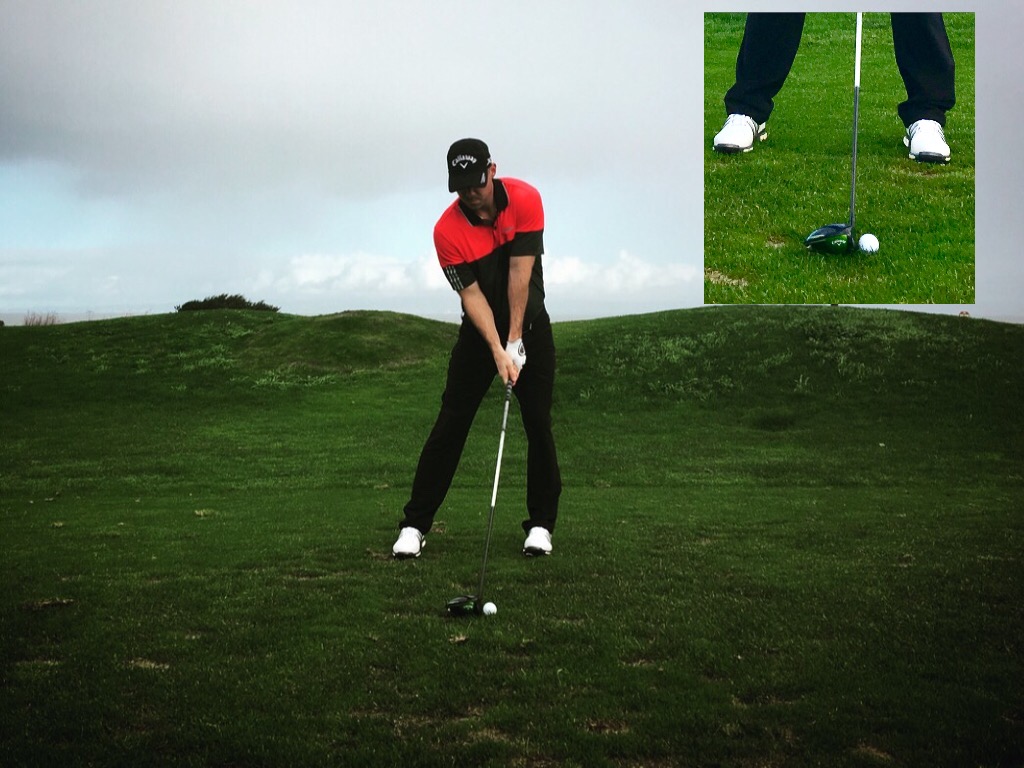
The driver off the deck, “the cut-off” swing and the off-speed shot are all good indications of where you stand with your golf swing. If you can master these shots, you are probably doing more right than wrong. In this article, we will examine what it takes to pull each shot off, and why you not may be able to.
The Driver off the Deck
This is by far one of the hardest shots in golf, because the driver head must strike the ball with the perfect angle of attack. To achieve this, a player must have the correct body angles at address and maintain them throughout the swing. When done correctly, a player will have the sensation that they are more “over the ball” with their top half at impact.
Golfers who struggle with this shot usually lose the body angles or “body shape” they started with at address. The most common fault I see is golfers “falling back” with their upper half on their downswing.
Creating the proper attack angle is critical for a crisp driver off the deck, and a player must create width on their downswing for a shallow angle of attack to pull pff the shot. It is a common misconception among players and instructors that a narrow downswing with as much “lag” as possible creates speed. It’s actually true that a wide downswing that creates speed.
If you can’t pull this shot off right now, practice at half speed until you make contact. Check your setup for the proper body angles and make sure your takeaway isn’t too wide, which tends to result in a too narrow downswing.
The Cut-Off Shot
This is one of the best shots to get your body and arms working together through the shot. In the cut-off swing, a player abbreviates their finish after impact. This is done to get the right side of your body working more around and through the shot. If done correctly, your arms will stay in front of your body with the same wrist angles. To check the position, you should be able to bring your body and arms right back down in reverse to impact without any manipulation.
Players who struggle with this shot have bad timing with their arms and body. When a player’s body stalls through impact, the hands will flip over rather than letting the right side of your body rotate around.
The “early clear” is the swing that results with a player attempting to clear their left side too early. Our arms generate speed, which pulls our body around. We still hit the ball with our core, but at the correct time. It’s important to understand how speed and inertia will clear our body.
The cut-off swing is a great drill to not only check positions, but to learn how to generate speed, especially shaft speed. In fact, the finish position could technically end in this cut-off position. Anything more — for example, the body rotating around or the shaft wrapping around your neck — is just pretty on the eyes. A great example would be the finish of Henrik Stenson; note where his arms fold up and body finishes, even with his 3 wood off the tee. A player should be able to cut off any swing just a few feet after impact.
The Off-Speed Shot
If you can’t do it half speed, you can’t do it full speed. A sign that players have control of their swing and trajectory is their ability to take any club and take some off it. Take your 7-iron and practice hitting shots to targets at varying distances. Start with 25 yards and work your way up to your full 7-iron distance.
If you struggle with contact on off-speed shots, more than likely you have “match-up” moves in your full-speed swing. This means you have created extra movement to make up for another position to make solid contact. When going off speed or to shorter distances, these match-up moves will be exposed as you may not have time in your swing to add that extra movement.
Practice these and pay attention to how your body is moving. You may find a part to your swing you can subtract.
- LIKE374
- LEGIT64
- WOW14
- LOL3
- IDHT2
- FLOP7
- OB4
- SHANK49
Instruction
The Wedge Guy: The easiest-to-learn golf basic

My golf learning began with this simple fact – if you don’t have a fundamentally sound hold on the golf club, it is practically impossible for your body to execute a fundamentally sound golf swing. I’m still a big believer that the golf swing is much easier to execute if you begin with the proper hold on the club.
As you might imagine, I come into contact with hundreds of golfers of all skill levels. And it is very rare to see a good player with a bad hold on the golf club. There are some exceptions, for sure, but they are very few and very far between, and they typically have beat so many balls with their poor grip that they’ve found a way to work around it.
The reality of biophysics is that the body moves only in certain ways – and the particulars of the way you hold the golf club can totally prevent a sound swing motion that allows the club to release properly through the impact zone. The wonderful thing is that anyone can learn how to put a fundamentally sound hold on the golf club, and you can practice it anywhere your hands are not otherwise engaged, like watching TV or just sitting and relaxing.
Whether you prefer an overlap, interlock or full-finger (not baseball!) grip on the club, the same fundamentals apply. Here are the major grip faults I see most often, in the order of the frequency:
Mis-aligned hands
By this I mean that the palms of the two hands are not parallel to each other. Too many golfers have a weak left hand and strong right, or vice versa. The easiest way to learn how to hold the club with your palms aligned properly is to grip a plain wooden ruler or yardstick. It forces the hands to align properly and shows you how that feels. If you grip and re-grip a yardstick several times, then grip a club, you’ll see that the learning curve is almost immediate.
The position of the grip in the upper/left hand
I also observe many golfers who have the butt of the grip too far into the heel pad of the upper hand (the left hand for right-handed players). It’s amazing how much easier it is to release the club through the ball if even 1/4-1/2″ of the butt is beyond the left heel pad. Try this yourself to see what I mean. Swing the club freely with just your left hand and notice the difference in its release from when you hold it at the end of the grip, versus gripping down even a half inch.
To help you really understand how this works, go to the range and hit shots with your five-iron gripped down a full inch to make the club the same length as your seven-iron. You will probably see an amazing shot shape difference, and likely not see as much distance loss as you would expect.
Too much lower (right) hand on the club
It seems like almost all golfers of 8-10 handicap or higher have the club too far into the palm of the lower hand, because that feels “good” if you are trying to control the path of the clubhead to the ball. But the golf swing is not an effort to hit at the ball – it is a swing of the club. The proper hold on the club has the grip underneath the pad at the base of the fingers. This will likely feel “weak” to you — like you cannot control the club like that. EXACTLY. You should not be trying to control the club with your lower/master hand.
Gripping too tightly
Nearly all golfers hold the club too tightly, which tenses up the forearms and prevents a proper release of the club through impact. In order for the club to move back and through properly, you must feel that the club is controlled by the last three fingers of the upper hand, and the middle two fingers of the lower hand. If you engage your thumbs and forefingers in “holding” the club, the result will almost always be a grip that is too tight. Try this for yourself. Hold the club in your upper hand only, and squeeze firmly with just the last three fingers, with the forefinger and thumb off the club entirely. You have good control, but your forearms are not tense. Then begin to squeeze down with your thumb and forefinger and observe the tensing of the entire forearm. This is the way we are made, so the key to preventing tenseness in the arms is to hold the club very lightly with the “pinchers” — the thumbs and forefingers.
So, those are what I believe are the four fundamentals of a good grip. Anyone can learn them in their home or office very quickly. There is no easier way to improve your ball striking consistency and add distance than giving more attention to the way you hold the golf club.
More from the Wedge Guy
- The Wedge Guy: Golf mastery begins with your wedge game
- The Wedge Guy: Why golf is 20 times harder than brain surgery
- The Wedge Guy: Musings on the golf ball rollback
- LIKE83
- LEGIT13
- WOW5
- LOL1
- IDHT0
- FLOP4
- OB1
- SHANK8
Instruction
Clement: Stop ripping off your swing with this drill!

Not the dreaded headcover under the armpit drill! As if your body is defective and can’t function by itself! Have you seen how incredible the human machine is with all the incredible feats of agility all kinds of athletes are accomplishing? You think your body is so defective (the good Lord is laughing his head off at you) that it needs a headcover tucked under the armpit so you can swing like T-Rex?
- LIKE0
- LEGIT2
- WOW2
- LOL0
- IDHT0
- FLOP0
- OB0
- SHANK2
Instruction
How a towel can fix your golf swing

This is a classic drill that has been used for decades. However, the world of marketed training aids has grown so much during that time that this simple practice has been virtually forgotten. Because why teach people how to play golf using everyday items when you can create and sell a product that reinforces the same thing? Nevertheless, I am here to give you helpful advice without running to the nearest Edwin Watts or adding something to your Amazon cart.
For the “scoring clubs,” having a solid connection between the arms and body during the swing, especially through impact, is paramount to creating long-lasting consistency. And keeping that connection throughout the swing helps rotate the shoulders more to generate more power to help you hit it farther. So, how does this drill work, and what will your game benefit from it? Well, let’s get into it.
Setup
You can use this for basic chip shots up to complete swings. I use this with every club in my bag, up to a 9 or 8-iron. It’s natural to create incrementally more separation between the arms and body as you progress up the set. So doing this with a high iron or a wood is not recommended.
While you set up to hit a ball, simply tuck the towel underneath both armpits. The length of the towel will determine how tight it will be across your chest but don’t make it so loose that it gets in the way of your vision. After both sides are tucked, make some focused swings, keeping both arms firmly connected to the body during the backswing and follow through. (Note: It’s normal to lose connection on your lead arm during your finishing pose.) When you’re ready, put a ball in the way of those swings and get to work.

Get a Better Shoulder Turn
Many of us struggle to have proper shoulder rotation in our golf swing, especially during long layoffs. Making a swing that is all arms and no shoulders is a surefire way to have less control with wedges and less distance with full swings. Notice how I can get in a similar-looking position in both 60° wedge photos. However, one is weak and uncontrollable, while the other is strong and connected. One allows me to use my larger muscles to create my swing, and one doesn’t. The follow-through is another critical point where having a good connection, as well as solid shoulder rotation, is a must. This drill is great for those who tend to have a “chicken wing” form in their lead arm, which happens when it becomes separated from the body through impact.
In full swings, getting your shoulders to rotate in your golf swing is a great way to reinforce proper weight distribution. If your swing is all arms, it’s much harder to get your weight to naturally shift to the inside part of your trail foot in the backswing. Sure, you could make the mistake of “sliding” to get weight on your back foot, but that doesn’t fix the issue. You must turn into your trial leg to generate power. Additionally, look at the difference in separation between my hands and my head in the 8-iron examples. The green picture has more separation and has my hands lower. This will help me lessen my angle of attack and make it easier to hit the inside part of the golf ball, rather than the over-the-top move that the other picture produces.


Stay Better Connected in the Backswing
When you don’t keep everything in your upper body working as one, getting to a good spot at the top of your swing is very hard to do. It would take impeccable timing along with great hand-eye coordination to hit quality shots with any sort of regularity if the arms are working separately from the body.
Notice in the red pictures of both my 60-degree wedge and 8-iron how high my hands are and the fact you can clearly see my shoulder through the gap in my arms. That has happened because the right arm, just above my elbow, has become totally disconnected from my body. That separation causes me to lift my hands as well as lose some of the extension in my left arm. This has been corrected in the green pictures by using this drill to reinforce that connection. It will also make you focus on keeping the lead arm close to your body as well. Because the moment either one loses that relationship, the towel falls.


Conclusion
I have been diligent this year in finding a few drills that target some of the issues that plague my golf game; either by simply forgetting fundamental things or by coming to terms with the faults that have bitten me my whole career. I have found that having a few drills to fall back on to reinforce certain feelings helps me find my game a little easier, and the “towel drill” is most definitely one of them.
- LIKE12
- LEGIT2
- WOW2
- LOL0
- IDHT0
- FLOP2
- OB0
- SHANK8
-

 19th Hole2 weeks ago
19th Hole2 weeks agoJohn Daly stuns fans into silence with brutal opening tee shot on PGA Tour Champions
-

 19th Hole7 days ago
19th Hole7 days agoThings got heated at the Houston Open between Tony Finau and Alejandro Tosti. Here’s why
-

 19th Hole4 days ago
19th Hole4 days agoReport: Tiger Woods has ‘eliminated sex’ in preparation for the 2024 Masters
-

 19th Hole3 weeks ago
19th Hole3 weeks ago2-time major champ announces shock retirement from the sport at age of 33
-

 19th Hole3 weeks ago
19th Hole3 weeks agoEdoardo Molinari reveals the latest PGA Tour golfer to turn down ‘good offer’ from LIV Golf
-

 19th Hole2 weeks ago
19th Hole2 weeks agoCharlie Woods finds it tough going on American Junior Golf Association debut
-

 19th Hole3 weeks ago
19th Hole3 weeks agoScottie Scheffler had an interesting response when asked how he ‘quiets the noise’ following Players victory
-

 19th Hole6 days ago
19th Hole6 days agoAddiction, spinal fusion, and scam artists – Everything Anthony Kim revealed in candid interview with David Feherty

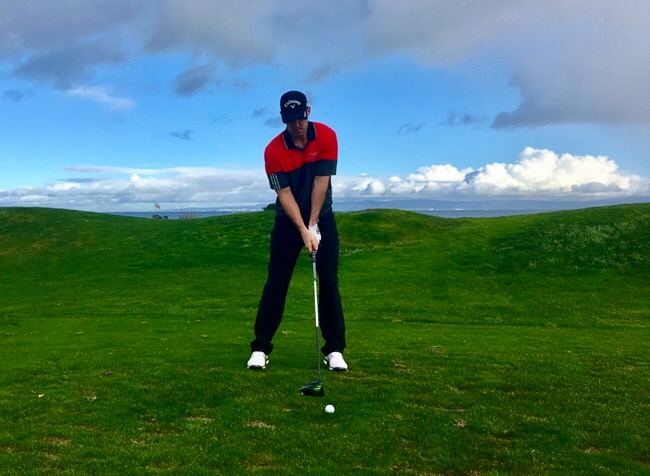



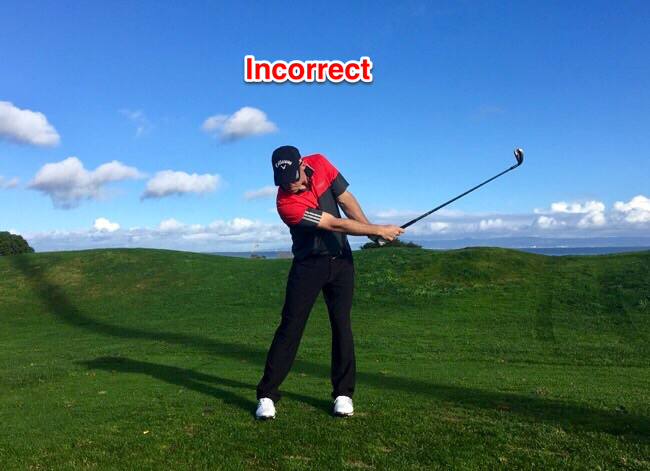
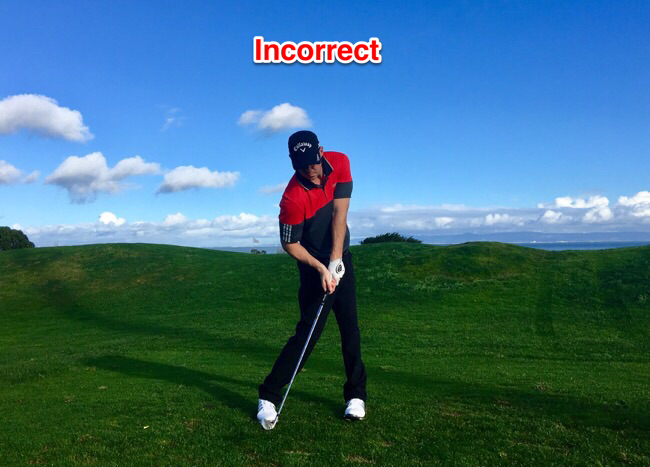
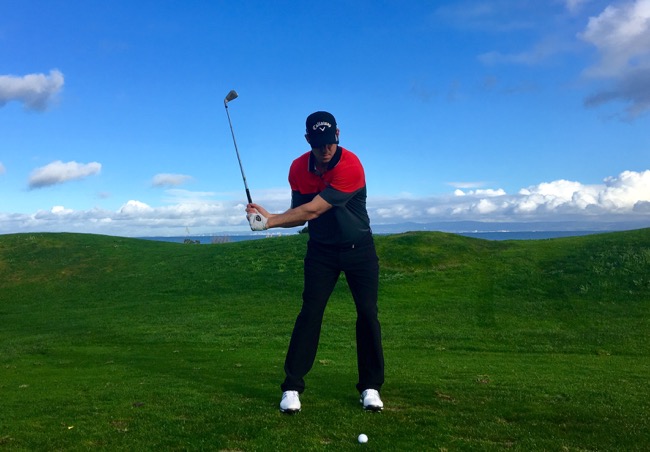










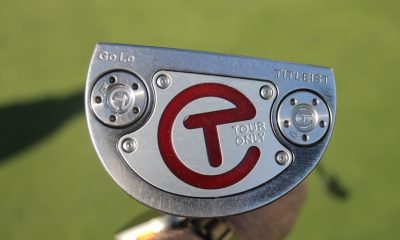

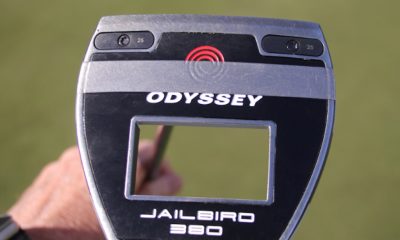

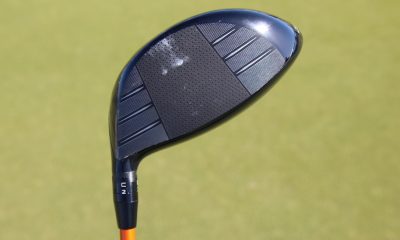



TheCityGame
Feb 17, 2017 at 12:37 pm
Love this article. This is about learning TO swing. . .not learning A swing.
Mike
Feb 15, 2017 at 7:06 pm
Great advice. One of my big regrets in golf is that I didn’t practice partial speed shots more from the beginning. Those shots are one big difference between really good players and OK players.
Jack Nash
Feb 15, 2017 at 2:25 pm
I like trying driver off the deck but as another poster stated it might help seeing a correct photo. I would imagine more of a feeling of slightly hitting down on the ball? I can usually make decent contact but if I get it 10′ in the air I’m doing good. It’s fun to try though. Specially against the wind.
Kelvin Kelley
Feb 15, 2017 at 2:37 pm
The cover image would be the correct “feel” of impact. Make impact feel close to the address position, where you have maintained your original body shape. Your hips will naturally clear, but you will be covering the ball more.
Andrew Levy
Feb 15, 2017 at 10:16 am
can you put the correct pictures up too?
Jason
Feb 15, 2017 at 9:18 am
For the off speed shots–are you suggesting to make a full or small swing to the shorter distances?
gdb99
Feb 16, 2017 at 5:11 pm
I’ve had my instructor tell me to make a full swing to a shorter target. He told me most people have a hard time doing it.
M.
Feb 15, 2017 at 8:14 am
Spot on… taken years to figure this out!